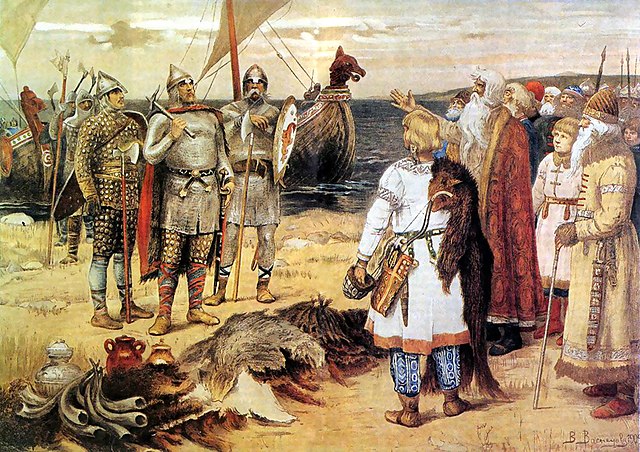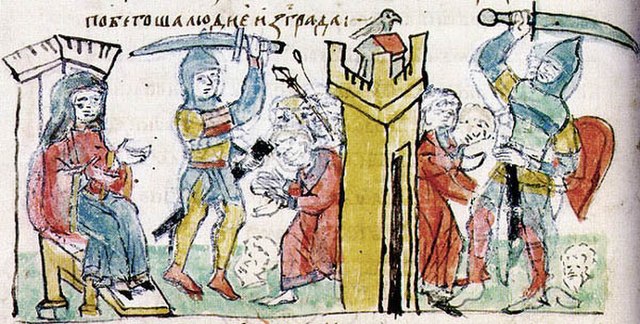Ruthenia is an exonym, originally used in Medieval Latin, as one of several terms for Kievan Rus'. It is also used to refer to the East Slavic and Eastern Orthodox regions of the Grand Duchy of Lithuania and the Kingdom of Poland, and later the Polish-Lithuanian Commonwealth, corresponding to the territories of modern Belarus, Ukraine, and West European Russia. Historically, the term was used to refer to all the territories of the East Slavs.
Ruthenian lion, which was used as a representative coat of arms of Ruthenia during the Council of Constance in the 15th century
Kievan Rus', also known as Kyivan Rus', was a state and later an amalgam of principalities in Eastern and Northern Europe from the late 9th to the mid-13th century. The name was coined by Russian historians in the 19th century. Encompassing a variety of polities and peoples, including East Slavic, Norse, and Finnic, it was ruled by the Rurik dynasty, founded by the Varangian prince Rurik. The modern nations of Belarus, Russia, and Ukraine all claim Kievan Rus' as their cultural ancestor, with Belarus and Russia deriving their names from it, and the name Kievan Rus' derived from what is now the capital of Ukraine. At its greatest extent in the mid-11th century, Kievan Rus' stretched from the White Sea in the north to the Black Sea in the south and from the headwaters of the Vistula in the west to the Taman Peninsula in the east, uniting the East Slavic tribes.

The Invitation of the Varangians by Viktor Vasnetsov: Rurik and his brothers Sineus and Truvor arrive at the lands of the Ilmen Slavs.
East-Slavic tribes and peoples, 8th–9th centuries
Princess Olga's avenge to the Drevlians, Radziwiłł Chronicle
Madrid Skylitzes, meeting between John Tzimiskes and Sviatoslav





